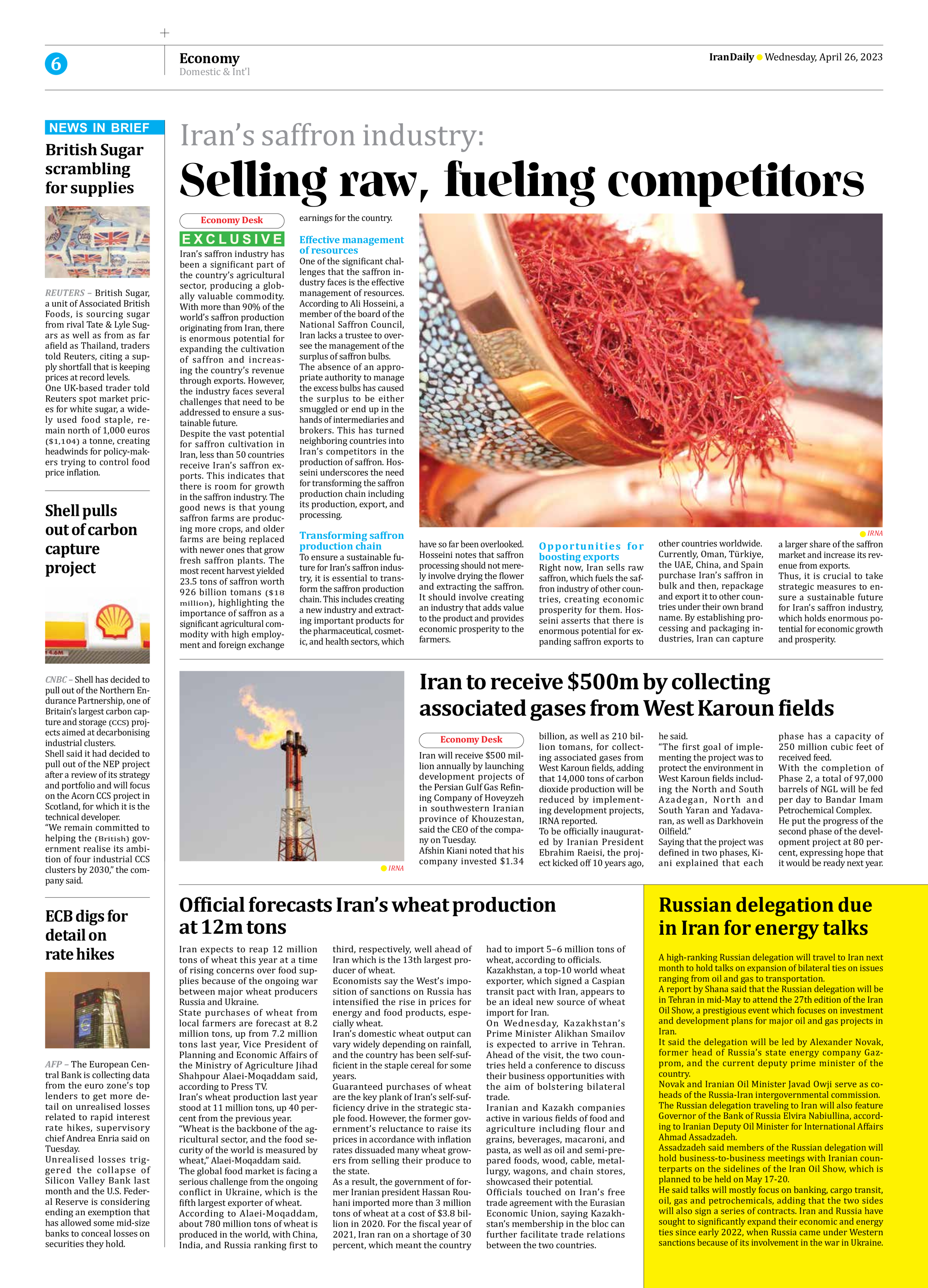
Iran’s saffron industry:
Selling raw, fueling competitors
Iran’s saffron industry has been a significant part of the country’s agricultural sector, producing a globally valuable commodity. With more than 90% of the world’s saffron production originating from Iran, there is enormous potential for expanding the cultivation of saffron and increasing the country’s revenue through exports. However, the industry faces several challenges that need to be addressed to ensure a sustainable future.
Despite the vast potential for saffron cultivation in Iran, less than 50 countries receive Iran’s saffron exports. This indicates that there is room for growth in the saffron industry. The good news is that young saffron farms are producing more crops, and older farms are being replaced with newer ones that grow fresh saffron plants. The most recent harvest yielded 23.5 tons of saffron worth 926 billion tomans ($18 million), highlighting the importance of saffron as a significant agricultural commodity with high employment and foreign exchange earnings for the country.
Effective management of resources
One of the significant challenges that the saffron industry faces is the effective management of resources. According to Ali Hosseini, a member of the board of the National Saffron Council, Iran lacks a trustee to oversee the management of the surplus of saffron bulbs.
The absence of an appropriate authority to manage the excess bulbs has caused the surplus to be either smuggled or end up in the hands of intermediaries and brokers. This has turned neighboring countries into Iran’s competitors in the production of saffron. Hosseini underscores the need for transforming the saffron production chain including its production, export, and processing.
Transforming saffron production chain
To ensure a sustainable future for Iran’s saffron industry, it is essential to transform the saffron production chain. This includes creating a new industry and extracting important products for the pharmaceutical, cosmetic, and health sectors, which have so far been overlooked. Hosseini notes that saffron processing should not merely involve drying the flower and extracting the saffron. It should involve creating an industry that adds value to the product and provides economic prosperity to the
farmers.
Opportunities for boosting exports
Right now, Iran sells raw saffron, which fuels the saffron industry of other countries, creating economic prosperity for them. Hosseini asserts that there is enormous potential for expanding saffron exports to other countries worldwide.
Currently, Oman, Türkiye, the UAE, China, and Spain purchase Iran’s saffron in bulk and then, repackage and export it to other countries under their own brand name. By establishing processing and packaging industries, Iran can capture a larger share of the saffron market and increase its revenue from exports.
Thus, it is crucial to take strategic measures to ensure a sustainable future for Iran’s saffron industry, which holds enormous potential for economic growth and prosperity.







